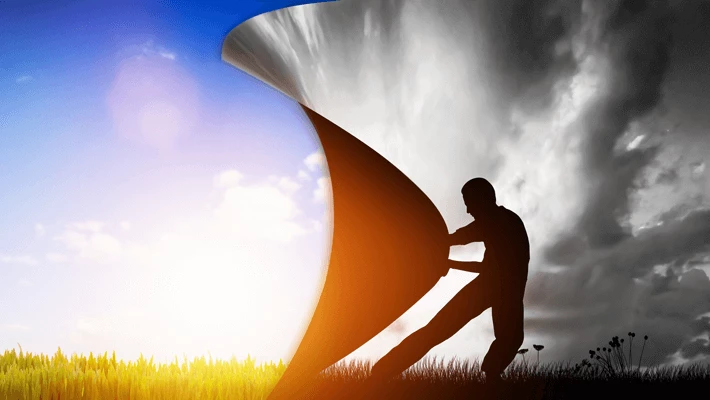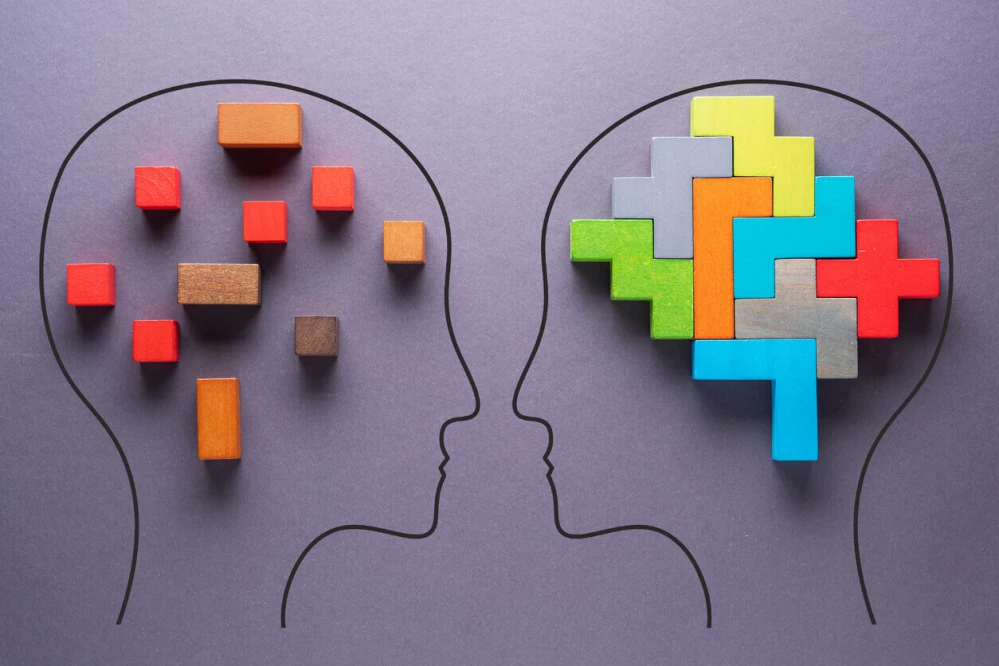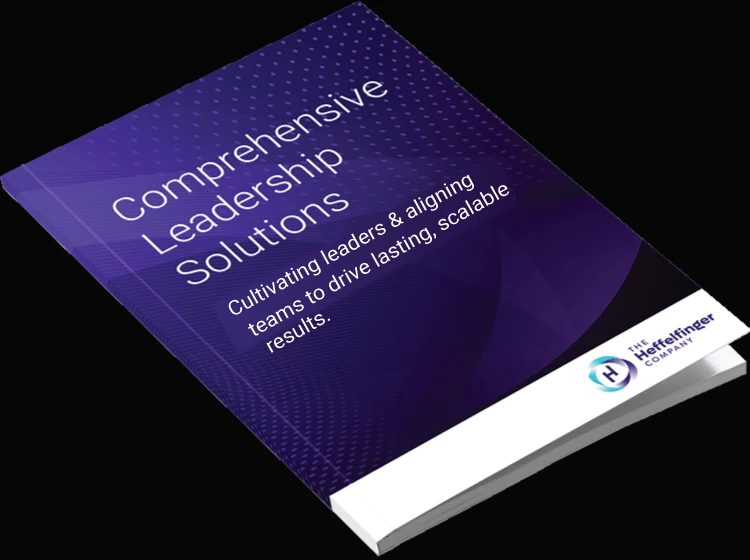“Imagine what organizations would be like if we stopped designing them like soulless, clunky machines. What could organizations achieve, and what would work feel like, if we treated them like living beings, if we let them be fueled by the evolutionary power of life itself.” ~Frederic Laloux, 2014. Reinventing Organizations
Great companies do not just respond to crises; they seize them as an opportunity to become better—to cast off what is no longer working and turn to new ways of doing business. The pandemic is requiring organizations to rethink how they enable agile, sustainable, and innovative ways of working. It has presented a profound opportunity for organizations to set the stage for a new way of doing business, one that will make them more adaptable, resilient, and innovative.
Even before 2020 – organizations were experiencing disruption….
“Between 2003 and 2011 - over 70% of the Fortune 1000 companies changed - proof that what got you to the top won’t keep you at the top” ~Forbes 2011
This year, the disruption has impacted every organization, every industry, every country, every individual. We can no longer think it does not apply to us. Granted, some organizations are thriving now. We ask you – are they thriving because they have made short-term, possibly innovative, adaptations to get through the crisis? Or have they really pivoted and changed their approach to business and their talent?
Most businesses probably have adapted short-term responses but have yet to figure out the mid and long-term approaches to your business. And yet, we believe that the most successful organizations will adapt their businesses for the short-term and take advantage of this time, right now to reinvent themselves for the long-term.
“Organizations face a choice between returning to a post-COVID world that is simply an enhanced version of yesterday or building one that is a sustainable version of tomorrow. The risk is more than that of falling behind—it’s the possibility of never catching up at all.” ~KMPG 2020
We would like to introduce you to a new way of thinking and being to use to reinvent yourselves: Work Reimagined through a Living Systems Approach. In a partnership we call Implexiti, we (Lori Heffelfinger, Sally B Parker, and James Jackman) are bringing to our communities and our clients this living systems approach that starts first with the Problem or Opportunity we see and then move into the Breakthrough.
The Problem/Opportunity We Face
2020 has been a year of unprecedented disruption set off by a tiny yet powerful virus that has brought the globe to its knees. Why has the disruption been so extreme? In a VUCA (Volatile, Uncertain, Complex, Ambiguous) world, disruption is a defining reality, so why were so many organizations un/underprepared? Were these events complete surprises, or were there signals all along that we were not reading, or perhaps even ignoring? How did our thinking about business and leadership contribute to our disruption?
We believe that our prevailing mindset of business as a machine creates a blind spot.
- Our drive for short-term gain blinds us to the need to invest in and for the future.
- Our desire for predictability blinds us to the need to sense and respond.
- Our need for control blinds us to the power of self-organization to foster engagement, spark experimentation, and fuel innovation.
- Our over-focus on actions (like adapting) blinds us to the importance of becoming adaptable.
Experts in change agility, Christopher G. Worley and Claudy Jules, find that to manage effectively in a VUCA context, leaders need to be able to accept contradictions and embrace paradox (Lewis, M., Exploring paradox: Toward a more comprehensive guide. Academy of Management Review - reference from Worley, Jules article). Unfortunately, leaders often suppress paradox and avoid exploring extreme “nightmare” scenarios.
We have a choice.
- We can remain limited within the constraints of an insufficient, erroneous business model / mindset = business as machine OR
- We can release to reinvent - transcend to transform - through a business as a living system model/mindset
It’s time to Disrupt.
The pandemic in 2020 has been called a “Black Swan Event” – an unpredictable event beyond what is normally expected of a situation and has potentially severe consequences, considered extremely rare, with severe impact, and most often viewed as being obvious in hindsight. According to Josh Bersin, these Black Swan events will become increasingly more frequent and more severe.
Organizations need to focus on Culture, Leadership and Teaming, and Work (which includes Employee Attraction, Engagement, and Retention).
Culture:
- “One in five American workers have left a job due to poor workplace culture. Over the past five years, the cost of turnover in the US stemming from workplace culture exceed $223 billion.” (SHRM - High Cost of Toxic Culture)
- Employees don’t trust governmental institutions anymore and are now looking to their organizations to lead them out of harm’s way and be more engaged in what’s happening outside the organizations walls into their communities. They are leaving the organizations who aren’t paying attention and joining those that do.
- “Successful organizations of the future will include social impact in their strategy building processes,” and investors now are devising ways to measure social impact. (Michael Porter, Strategy Guru and Harvard Business School Professor)
Work:
- Technology has changed business models and how work gets done. This will continue at an accelerated rate.
- “85% of jobs that exist in 2030 have not been invented yet” (SHRM Visionaries)
Leadership and Teaming:
- “While employees are generally more satisfied with their work – there are still looming opportunities for employers in the areas of work demands, mental health, teaming, and relationships.” (KMPG 2020 American Worker Survey)
Seeing our Organizations as a Living System – The Breakthrough We Need
How a Living Systems Mindset Shapes our Thinking
(adapted from Dr. Margaret Wheatley, Dr. Kathleen E. Allen and Sally B. Parker’s work)
Organizations are already living systems. The problem is we treat them as if they were machines, constraining and limiting their inherent potential to thrive. By seeing our organization as a living system, we begin to unleash its natural life force. Let’s start by looking at several characteristics of living systems that can reshape our mindsets and thinking when applied to our organizations.
Self-Creating
- Living systems organize around an identity, a boundary that distinguishes them from everything else. If the boundary is too rigid, life cannot be sustained; if it is too open, it cannot generate new capacities nor adapt. Maintaining a sensitive balance between open and closed is an ever-present challenge for livings systems. When we see our organization as a living system, we ensure a clear identity or purpose through which people can continuously sense and respond, so the organization thrives.
Self-organizing
- Nature is designed to self-organize, naturally innovating using simple rules and organizing principles that have the power to enable a wide diversity of organizational solutions. “When an organization is filled with people who can initiate and organize their own learning and work that aligns with the organization's higher purpose, there is ongoing adaptation occurs. This means that people are constantly problem-solving and supporting solutions that they help to create.”
Connected and Interdependent
- “External forces like sunlight, wind, rain, and gravity impact the individual plants and species and the ecosystem itself. If we saw our organization as a living system, we would focus on the quality of our relationships with each other and between the organization and its external environment. “
Designed to Adapt
- “Living systems are designed to evolve naturally with information. Nature uses specific design principles to organize around a higher purpose; to create conditions conducive to the future generations of life. What if we led from the framework that our organization or community is designed to support the life of our current and future employees, the community, the world we live in, our customers, and our supply chain?“
Implications of a Living System Mindset for Your Organization
If we led from a living system mindset, we would see these shifts in our thinking and practice:
Seeing Connection as Essential
- Relationships would matter. We would prioritize relationships with external partners, internal stakeholders, and the environment. We would be active observers of feedback from the external environment and learn from that feedback. We would use it to reshape decisions, change designs, and change direction as needed.
Be Designed to Adapt
- Adaptive behavior is normal for living systems. It is not something that we only do when we are in trouble. Living systems are skilled at making small and continuous shifts, so it remains a good fit with its external environment.
Unleashes Instead of Controls
- Nature depends on self-organization to continually adapt and to remain efficient and productive. It does not create hierarchical structures or add layers of bureaucracy to processes. It assumes that individual actors in the system can self-organize and will actively support the higher shared purpose of the system. The leadership and management goals are to develop and unleash self-organization rather than control people.
Conclusion
Leaders and organizations have a tremendous opportunity to take advantage of this time to release by letting go of outdated business models and mindsets that will sooner than later cause them to fall behind. Releasing creates the space in which to reinvent and innovate. The organizations that do both will continue. Some organizations have started on this path already, most of us have temporarily adapted and are responding mostly to the day-to-day grind and some organizations are on the brink of bankruptcy.
We are in a VUCA world where “Black Swan Disruptions are becoming bigger and more frequent.” There is no going back to where we were - there is no “New Normal.” There is only the opportunity to LEAN into the unknown by knowing who we are (identity) and creating the conditions in our organizations, with our leadership, and even into our communities that allow us to thrive. Yes, it is possible, but it is not a guarantee without a reset in our thinking and acting.
Sally, James, and I advocate learning more about the conditions which cause organizations to thrive. We will be sharing more in upcoming blogs. You can always drop us a line or give us a call. We are calling our new partnership, “Implexiti.”
More to come…enjoy the ride. It can be a roller coaster and even fun at times!
If you are intrigued and want to learn more about our approach, please email us.
Warmly,
Lori, Sally and James
Supporting business leaders and HR/OD Leaders to transform cultures and transition through the pandemic and beyond.
Lori Heffelfinger, MSOD, PCC & James Jackman, MSOD
———
Sally B. Parker
sally.bparker@timezeroenterprises.com

References:
- SHRM Visionaries 2020 Conference, October 20, 2020, Josh Bersin
- “Black Swan Events”, Investopedia August 17, 2020
- The Future Chief “People Officer”, SHRM Executive Network/HRPS - Towers Watson Study
- "Work Anywhere Together", KMPG
- “Big Business - The End is Near ….”, Nathan Furr, Forbes April 21, 2011
- “Reimagining the Post Pandemic Economic Future”, McKinsey, August 14, 2020
- Michael Porter on Strategy and Competition, WOBI Digital Events November 4-6th, 2020
- “Leading from the Roots: Nature Inspired Leadership Lessons for Today’s World”, Dr. Kathleen E. Allen,2018
- “COVID-19’s Uncomfortable Revelations About Agile and Sustainable Organizations in a VUCA World”, Christopher G. Worley and Claudy Jules, The Journal of Applied B







